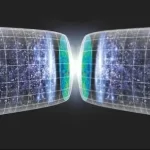Key Takeaways:
- In April 2019, a meteorite, named Aguas Zarcas, crashed in Costa Rica, attracting global attention for its unique composition.
- Unlike ordinary meteorites, Aguas Zarcas is a carbonaceous chondrite, rich in complex organic molecules, including amino acids—the building blocks of life.
- Scientists believe such meteorites may have played a role in kickstarting life on Earth billions of years ago.
- The rush to collect fragments turned the event into a modern-day gold rush, with prices surpassing those of gold per gram.
- Ongoing scientific investigations aim to unlock the meteorite’s secrets, providing insights into the early Solar System and the potential origins of life.
A celestial spectacle unfolded over Costa Rica in April 2019, as a meteorite named Aguas Zarcas shattered the calm of the night. What seemed like a typical cosmic event took an extraordinary turn, drawing the world’s attention to a unique space rock that could be more precious than gold.

Unlike common meteorites, Aguas Zarcas belongs to the rare category of carbonaceous chondrites, characterized by a composition rich in carbon, including complex organic molecules such as amino acids—the fundamental building blocks of proteins.
The saga began with Marcia Campos Muñoz, who, on that fateful night, witnessed the meteorite crashing through her roof. The fragments scattered across the village, turning Aguas Zarcas into a global sensation.
This carbonaceous chondrite offers a glimpse into the early Solar System’s pristine remnants, dating back billions of years. Scientists believe that such meteorites, carrying organic compounds, might have played a crucial role in seeding life on Earth.

Aguas Zarcas shares a kinship with the legendary Murchison meteorite, a pivotal discovery in 1969 that transformed the field of astrobiology. Murchison contained amino acids, nucleobases, and even the sugar molecule ribose—the backbone of RNA.

Aguas Zarcas, 50 years fresher than Murchison, promises to provide a more detailed understanding of these organic compounds and potentially reveal proteins, a groundbreaking discovery yet to be confirmed in a meteorite.
As researchers delve into the mysteries encapsulated in Aguas Zarcas, challenges emerge. The clock is ticking, and Earthly influences threaten to contaminate the ancient information harbored by the meteorite. Clays, its major constituent, absorb air and water, while amino acids and other organics from Earth intrude layer by layer.
The scientific community faces a race against time to extract valuable insights from three ancient periods: pre-Solar System stardust, the birth of the Solar System, and the formation of Aguas Zarcas itself.
The meteorite’s journey doesn’t end with its crash on Earth; it survived a fiery entry through the atmosphere and now faces the threat of erosion during Costa Rica’s rainy season. The delicate nature of these remnants underscores their importance and the need for swift and meticulous scientific study.
Beyond the scientific endeavors, Aguas Zarcas triggered a meteorite gold rush, reminiscent of historical rushes for precious minerals. Collectors and dealers descended upon the village, with prices skyrocketing to levels surpassing those of gold. The economic windfall reached locals like Ruddy Valerio Díaz, who turned his newfound fortune into a thriving business, aptly named “Meteorite Tilapia Ranch.”
While the meteorite’s fragments have dispersed worldwide, scientists grapple with the ethical implications of their trade. Meteorites fall under a patchwork of laws globally, with some countries viewing them as cultural treasures that can’t be freely exported. Costa Rica may soon join those ranks, considering regulations to protect these celestial artifacts.
As the scientific community eagerly awaits the findings from Aguas Zarcas, it stands as a testament to the cosmic mysteries that continue to captivate humanity. This celestial visitor, more precious than gold, carries within it the potential to unravel the origins of life and offer profound insights into the cosmic tapestry that surrounds us.


